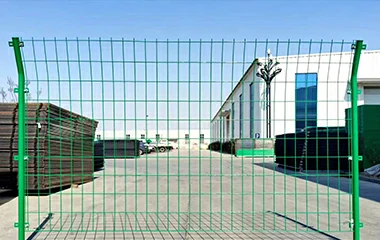 TEL:
+86-13102802206
TEL:
+86-13102802206
 Email:
fencenetting@china.com
Email:
fencenetting@china.com
 Language
Language
 TEL:
+86-13102802206
TEL:
+86-13102802206
 Email:
fencenetting@china.com
Email:
fencenetting@china.com
 Language
Language


The Cost of Temporary Fencing An Overview
In both construction and event management, temporary fencing plays a vital role in site security and organization. It serves multiple purposes, from keeping unauthorized individuals away from hazardous areas to providing a safe environment for public events. However, as with any service, the cost of temporary fencing can vary widely based on several factors. Understanding these factors is essential for businesses and event planners seeking to manage their budgets effectively.
Factors Influencing the Cost of Temporary Fencing
1. Type of Fencing Temporary fencing can come in various forms, each with different costs associated. The most common types of temporary fencing include chain-link, plastic, and metal panel fences. Chain-link fences, for instance, are known for their durability and security but can be more expensive to rent than plastic fencing, which is lightweight and more suited for low-security events. On the other hand, metal panel fences provide a solid barrier but can often be the highest in rental costs. The choice of fencing type will significantly impact the overall expense.
2. Material Quality The quality of materials used in temporary fencing also affects pricing. Higher quality materials may come at a premium, but they often promise better durability and longevity. For instance, opting for galvanized steel over basic iron can ensure that the fencing remains rust-free, especially if exposed to outdoor elements for an extended period. This initial higher cost can be offset by reduced maintenance and replacement needs.
3. Rental Duration The duration for which the fencing is required is another critical factor in determining cost. Companies typically offer tiered pricing based on rental periods. Short-term rentals (less than a week) may carry a higher daily rate than longer-term rentals. For instance, an event lasting a month may yield a significantly lower daily rental cost than one lasting just a weekend, making it more economical for extensive projects or longer events.
4. Site Preparation and Installation Proper installation of temporary fencing often requires additional labor and preparation time, which can drive costs higher. Depending on the complexity of the site—such as uneven terrain or the need for custom configurations—installation costs can escalate. Special machinery or additional manpower may be necessary for setup, increasing both labor and equipment costs.

5. Transportation Fees If the fencing company is located far from the rental site, transportation costs will be added to the final bill. This can be particularly relevant for large events or remote construction sites. It’s advisable to factor in transportation when budgeting for temporary fencing.
6. Local Regulations In some areas, local regulations may dictate specific requirements for temporary fencing. Such regulations can include fencing height, visibility, or even additional safety features. Compliance with these regulations could require additional investment, both in terms of materials and installation.
7. Insurance and Permits Depending on the intended use of the temporary fencing, securing permits and insurance might be necessary. The costs associated with these can vary significantly based on location and the nature of the project, which can ultimately influence the overall cost of fencing as well.
Cost Estimates
Given the various factors impacting pricing, it's challenging to provide a one-size-fits-all estimate. However, general price ranges can be helpful. For example, typical rates for basic chain-link temporary fencing range from $1.50 to $3.50 per linear foot for rentals. Metal panel fencing can range from $2 to $6 per linear foot, whereas plastic barricades might be priced around $0.50 to $1.50 per foot. Additional costs for installation, transportation, and compliance should also be anticipated.
Conclusion
Selecting the appropriate temporary fencing and understanding its cost implications is crucial for any project. By considering the type of material, rental duration, site conditions, and local regulations, businesses and event organizers can make informed decisions that suit their budgets. Investing time in understanding the total cost of temporary fencing can lead to better planning, reduced costs, and enhanced safety and organization during operations. Whether it's a bustling construction site or a lively festival, the right temporary fencing can make all the difference.